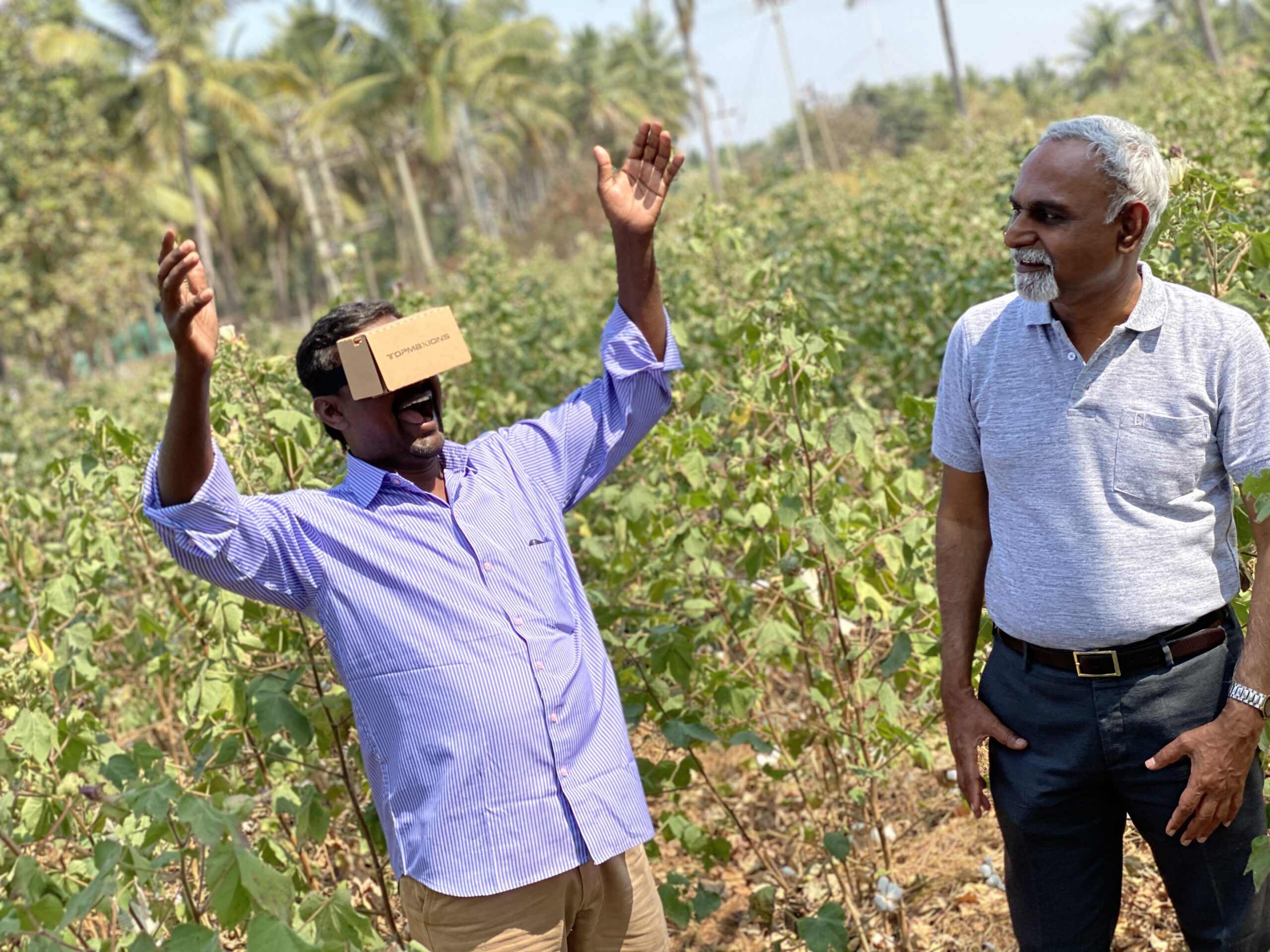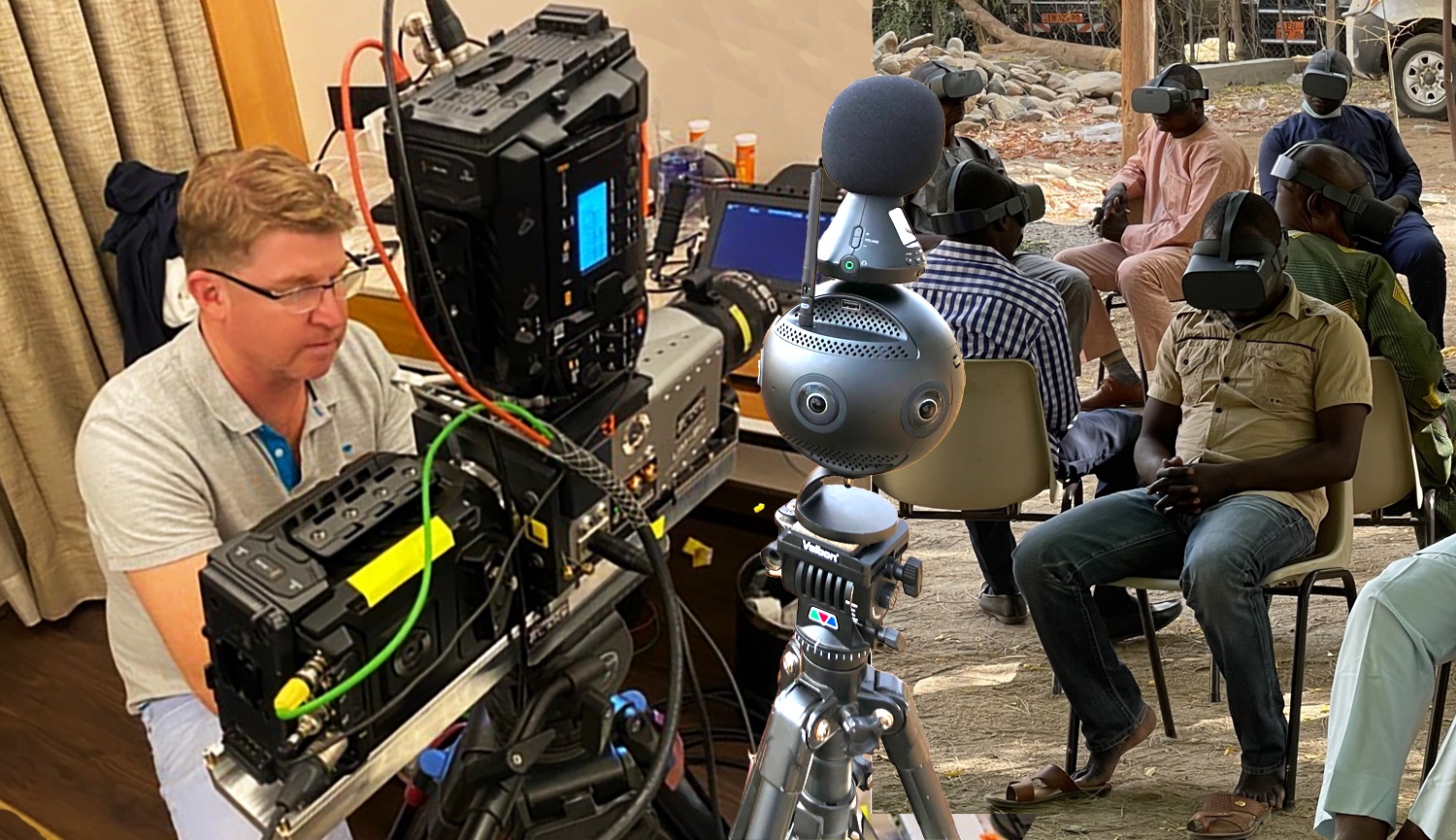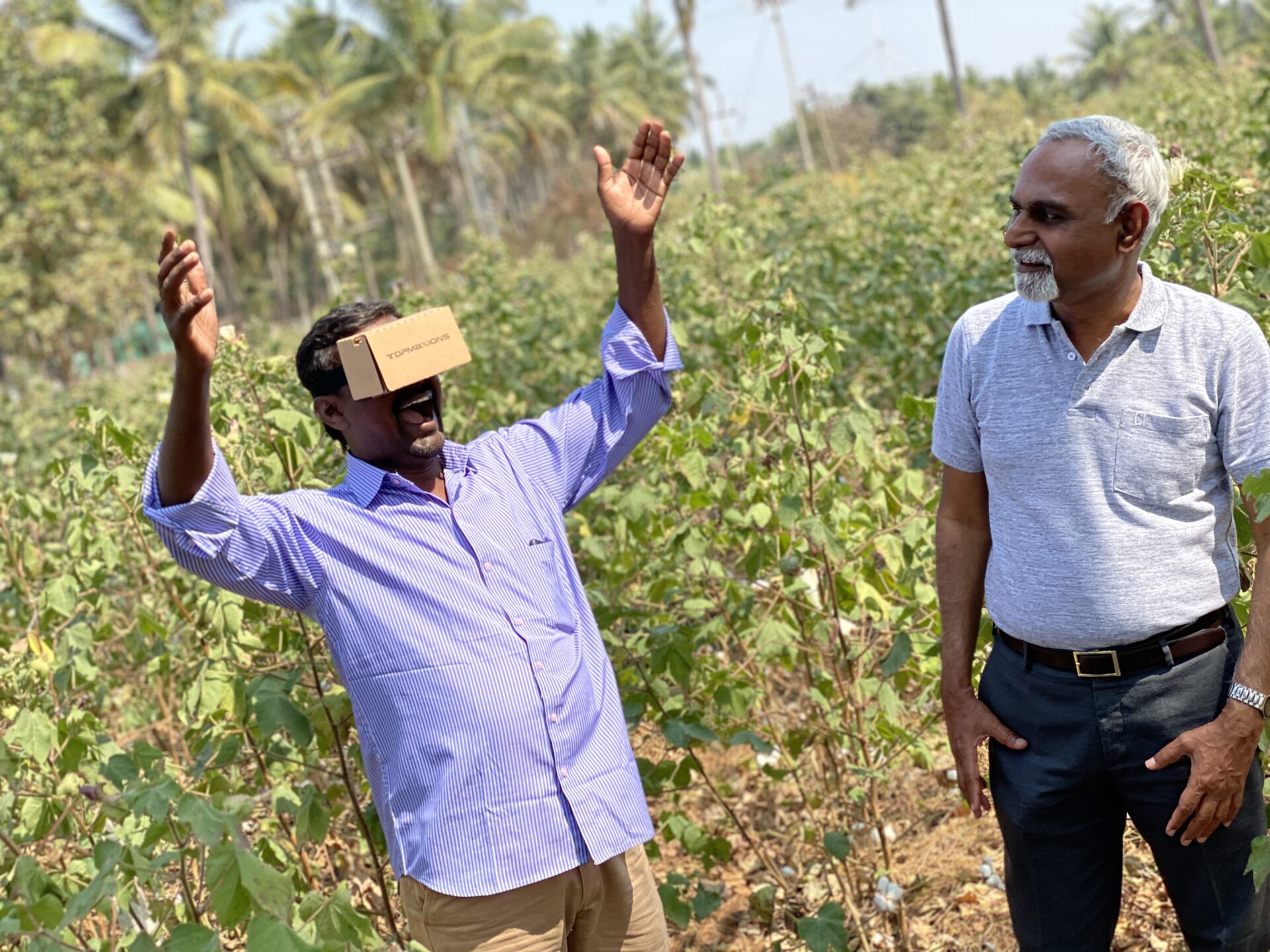Title: Development of virtual reality films for smallholder farmers. 2020-2022. Project: “Seeing is Believing” – Virtual Reality Trainings for Cotton Farming’ Development of Modern digital tools for cotton production
Project administrative staff: Mr. Kai Hughes, Ms. Lorena Ruiz, Mr. Mike McCue & Ms. Caroline Taco
Project technical coordinator: Keshav Kranthi, Chief Scientist, ICAC
Project consultant: Dr. Sandhya Kranthi
Project funding: German Agency for International Cooperation or (GIZ). GIZ USA 050- GA No. 81244022 – Eur 1,457,771.
Beneficiaries: The VR films have been used in training programs for train extension staff and farmers conducted in Cameroon, Burkina Faso, Cote d’Ivoire, Zambia, Tanzania and Kenya.
Two VR films, each approximately 30 minutes in duration, were created as part of a project. These films focus on two important topics: “Integrated Pest Management in Cotton” and “Global Best Practices for Cotton Production.”

Virtual reality collects video from multiple angles and combines them to create a “sphere” of virtual reality around the user. It is especially important to smallholders for a variety of reasons:
- It allows them to “walk” in fields anywhere on earth, at any time of the season, to learn best practices for cotton farming.
- It allows them to practice dangerous procedures, such as pesticide application, without actual risk of harm.
- It is a battery-powered, wireless technology that can be used in a classroom or in a cotton fields, without needing electricity or a computer.
- The immersive learning gained through the use of VR makes a bigger impression on users, making the skills learned through its use easier to understand and remember.
The completed films were delivered to the project’s funding agency, GIZ, and were officially unveiled on March 27th, 2022, during training in Cameroon.




